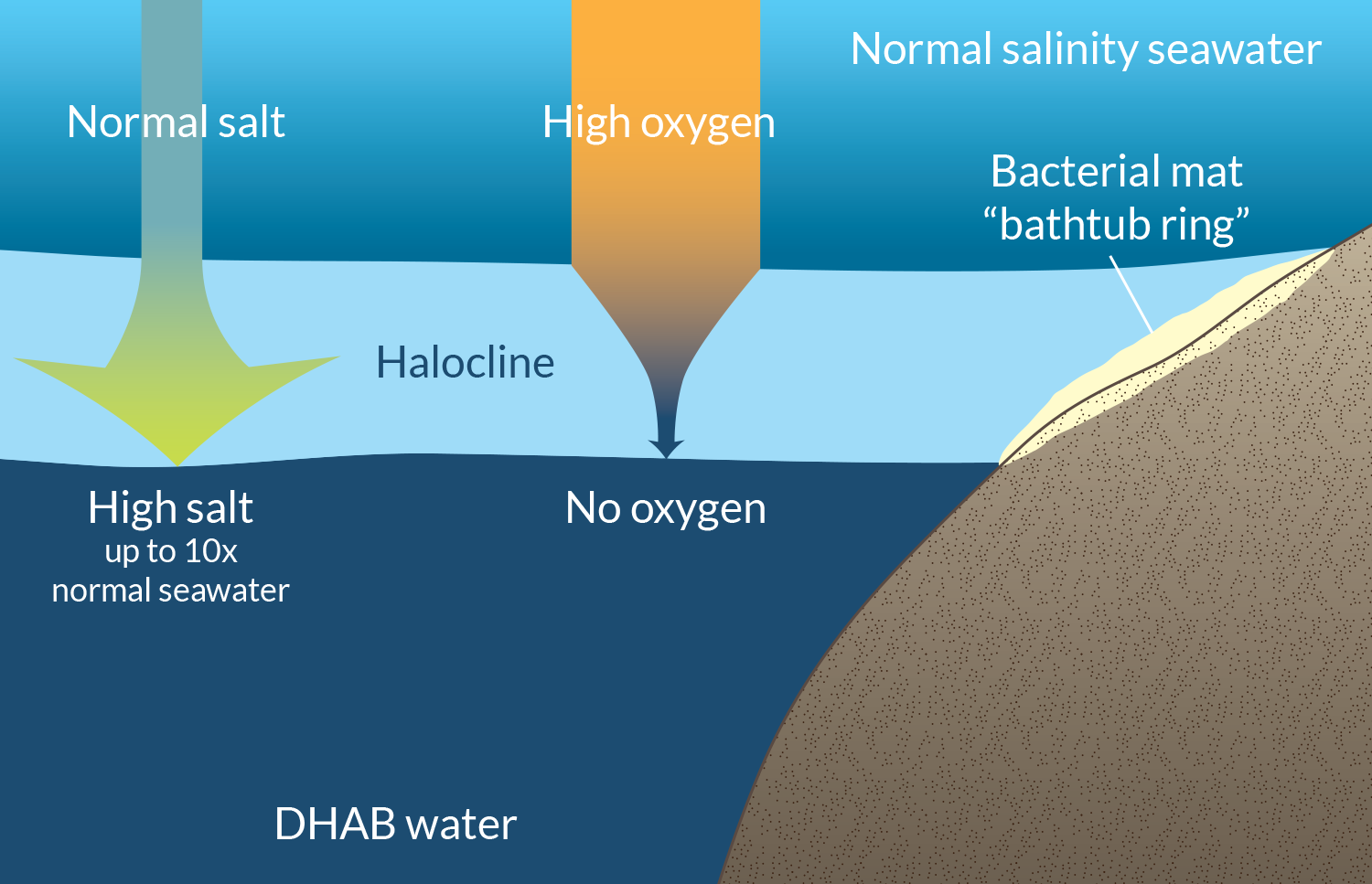The Halocline
Border Between Two Worlds—and a World of Its Own
One of the most interesting features of DHABs is the zone where they meet the normal seawater above them. Because of its high salt content, the brine in a DHAB is so dense that it mixes very little with the seawater above. Instead, there is a narrow layer of water where, as you move toward the basin, the salt concentration goes from normal seawater salinity to hypersaline (very salty). Along that gradient, the density of the water goes from that of normal seawater to very high, and the oxygen concentration drops from normal seawater concentrations to zero. That transition zone is called the halocline. At some basins it is only a meter (39 inches) thick.

A Density Gradient
Many tiny particles in the sea, including bits of fecal matter and dead organisms, get trapped in the halocline because they are not dense enough to fall through it. Some get caught at the top of the halocline, some stop falling within the halocline, and others make it to the bottom of the halocline but cannot fall all the way into the DHAB. Where they stop depends on their density (recall that density = mass ÷ volume).
All that organic matter is a rich source of nutrients for organisms that are able to live in the high salt and low oxygen conditions of the halocline. Scientists have discovered a vigorous community of many kinds of bacteria, archaea, and protists (microbial eukaryotes) that either eat the organic particles or prey on the organisms that eat the particles.
Like in the Halocline
So far, research shows that the microbial community in the halocline is unique—few of the organisms that live in the halocline are also found in the normal seawater just above it or in the DHAB water just below it. The microbial community varies across the halocline, too. Researchers have found that the microbial community living at the top of the halocline is distinct from the community living toward the bottom of the halocline, separated only by a couple of meters (6 feet) or even less! Microbiologists think that is because the changes in salt and oxygen levels through the halocline provide a range of conditions over a very short distance, and each set of conditions can support different species of microbes.
Other unique life forms may live in the sediment where the halocline meets the seafloor. Remember that a DHAB is a basin, with walls that come up like the sides of a bowl. The halocline sits on top of the very salty water in the basin and touches the sides of the basin. Researchers call that area the “bathtub ring” because it is like the ring of soap scum and dirt that forms on a bathtub when the water is drained out. The sediment in that narrow zone has a little bit of oxygen and less salt than sediments inside the DHAB. These conditions provide a good habitat for different forms of life than those that live in DHAB sediments.

Researchers call the area that touches the sides of the basin the “bathtub ring” because it is like the ring of soap scum and dirt that forms on a bathtub when the water is drained out.




